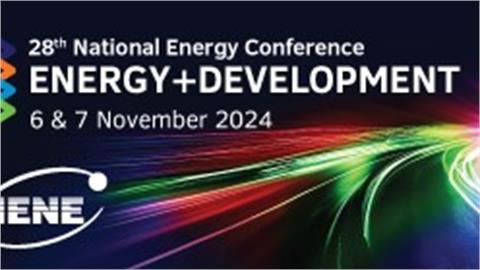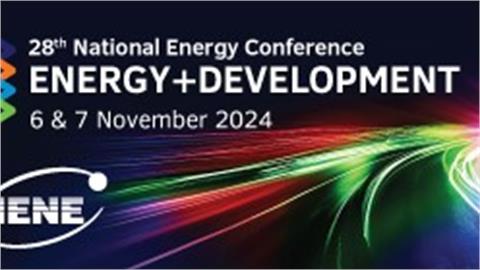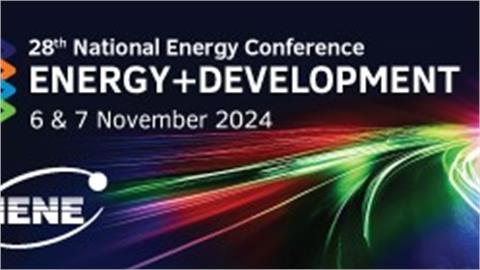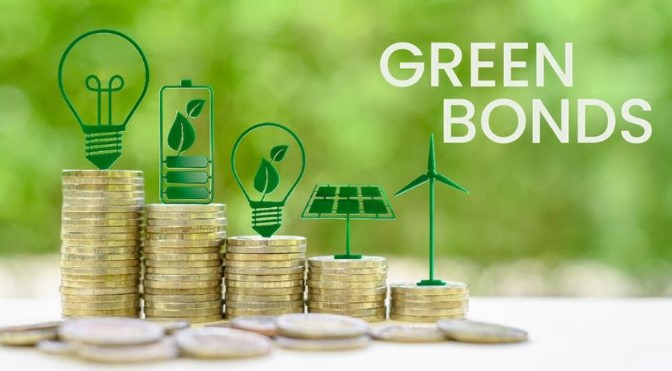The “South East Europe Energy Outlook 2021/2022”, IENE’s major reference study, which deals with the current energy situation and prospects in the SE European region and covers the “Outlook” from now until 2040, has been completed after two years of intensive preparation and research. The study, which contains substantial comparative data, detailed sectorial analysis, and energy demand and production estimates and projections on all 15 of the region’s countries, was presented to media representatives in a Press Conference on Monday, April 4th.
The “South East Europe Energy Outlook 2021/2022”, IENE’s major reference study, which deals with the current energy situation and prospects in the SE European region and covers the “Outlook” from now until 2040, has been completed after two years of intensive preparation and research. The study, which contains substantial comparative data, detailed sectorial analysis, and energy demand and production estimates and projections on all 15 of the region’s countries, was presented to media representatives in a Press Conference on Monday, April 4th.
During the event, the study’s key findings on the current status, opportunities and challenges concerning the SE Europe’s energy sector were presented by the Chairman and Executive Director of IENE, Mr. Costis Stambolis, the Secretary General of IENE and Chairman of the Institute’s Energy Efficiency Committee, Mr. Konstantinos Theofylaktos and the Chairman of IENE’s Renewable Energy Sources Committe, Energy Consultant Mr. Nicholaos Sofianos.
Key points raised by the speakers included:
- The grouping of the 15 countries* examined in the current Outlook under the SE Europe heading is more geographically driven than energy related. The group consists of EU Member States, the Energy Community Contracting Parties (mainly West Balkans) and Turkey and Israel. Although culturally, politically and economically diverse, these countries are related and also bound, in different degrees each, to EU energy policies, strategies and objectives. Hence, the EU and its various bodies (i.e. Energy Community, ACER, CESEC, etc.) exert considerable influence in energy policy formulation and energy market operation in SE Europe.
- The SEE region is characterized by high oil and gas import dependence. Crude oil and oil product imports corresponded to 87% of total oil consumption and natural gas to 88.1%. This high reliance on hydrocarbon imports is driving many countries exploration efforts and this has already resulted in increased exploration work and new finds especially in Romania, Albania, Croatia, Cyprus, Israel, and Turkey. As latest analysis suggests, it looks possible that oil and gas production at SEE level will increase by 2025, thus lessening to a certain degree import dependence.
- The concept of an Expanded South Corridor for natural gas is introduced and defined as to include all major gas trunk pipelines, LNG regasification terminals and underground gas storage facilities, which will ensure that gas if fed into the system with some of them being re-directed towards the main European gas markets. This Expanded South Corridor, with its multiple gas entry points and linked underground gas storage and LNG facilities, will provide the necessary background for the operation of regional gas trading hub(s). Already some nascent regional gas trading hubs are operating in the region very much in line with similar gas hubs currently operating in various European countries. The latest addition is Greece’s Gas Trading Hub which is operated by the Hellenic Energy Exchange which commenced full operation only 2 weeks ago.
- Nuclear power, although it contributes only 4.1% to total gross inland consumption in SEE (including Turkey), remains a viable option since it covers important base load requirements in certain key countries (Romania, Bulgaria, Croatia, Slovenia, Hungary) and is fully compatible and supportive of EU’s (revised) decarbonisation policies. In view of ongoing plans in Romania and Turkey for expansion of installed nuclear capacity, nuclear power is expected to play a more critical role in strengthening the power generation base of SEE over the next decade.
- In terms of security of energy supply, the SEE region as a whole appears more vulnerable than the rest of Europe (mainly Western European countries). This is due to the as yet limited import options, mainly for gas, the difficult morphology of the various countries, and the region’s reliance on a small number of oil and gas suppliers. Energy security in SEE can be strengthened by implementing a broad plan (already in progress) for improving interconnectivity for both electricity and gas across the region and also by diversifying further the energy mix of the various countries. Lately, and on account of latest experience, energy security risks in SEE have increased and include physical hazards (i.e. earthquakes, floods, storms) as well as terrorist threats and war risks
- Alongside power grid reinforcement, a diverse mix of flexible generation technologies in SEE (i.e. hydro technologies, gas, geothermal, biomass, natural gas and storage) can facilitate the integration of variable RES – especially wind and solar PV. In particular, reduced flexibility needs and increased system reliability can be achieved by integrating countries and regions with fundamentally different weather regimes. An interconnected SE European power system would be highly beneficial for variable RES integration. Indeed, regional cooperation, stronger power systems and market integration will help minimize power system costs for consumers while maximizing supply security.
- Looking at the projection of gross inland energy consumption in the EU member states of the SEE region, the overall tendency shows a stabilisation and even a small reduction in the time horizon to 2040. The decrease of the use of coal is evident, reaching a minimum level by 2040, while oil products lose part of their share in the gross inland consumption. The winners in this change are RES and nuclear energy. In contrast, the projection of gross inland energy consumption in the six Western Balkan countries presents a rather different story from that of the EU member states in the region. Following the expected growth of GDP, gross inland energy consumption is projected to increase by almost 40% between 2015 and 2040, with the amount of coal being held almost constant, close to 15 Mtoe.
- In terms of energy demand projection, natural gas is the emerging fuel with a constant increase, connected with the pipeline and grid expansion projects in the East and Western Balkans region. Gross Inland Energy consumption in Turkey is slated to increase by more than 50% between 2020 and 2040. The role of renewable energy is seen to increase notably, reaching 28% of the Gross Inland Consumption (GIC) in 2040, the amount of coal remains at the level of 50 Mtoe with its relative contribution being reduced to 23% in 2040 and the contribution of natural gas decreases to 17% of the GIC. Nuclear energy appears for the first time in Turkey’s GIC after 2025 with the operation of the Akkuyu nuclear power plant and is increasing until 2050, following the nuclear expansion program of the country.
- Investment prospects in the broader SEE region for energy related basic infrastructure and energy projects across the board (i.e. electricity, natural gas, RES, thermal power plants, oil and gas exploration, energy efficiency) look positive over the next decade. There appears to be significant improvement in anticipated and planned projects and related investment from now on until 2030. Compared to projections made in 2017 for the period 2016-2025, total estimated energy related investment in the region is much higher and amounts to €483.7 billion. Corresponding investments for the original 13-country group (as they appear in the 2017 Outlook) are slated at €387 billion, which is 41.8% higher compared to the 2017 estimates. This is a vast improvement compared to 5 years ago and clearly shows the substantially increased interest and appetite for energy investments in SE Europe.
You may find further information about the "South East Europe Energy Outlook 2021/2022" and place your order at www.iene.eu.




